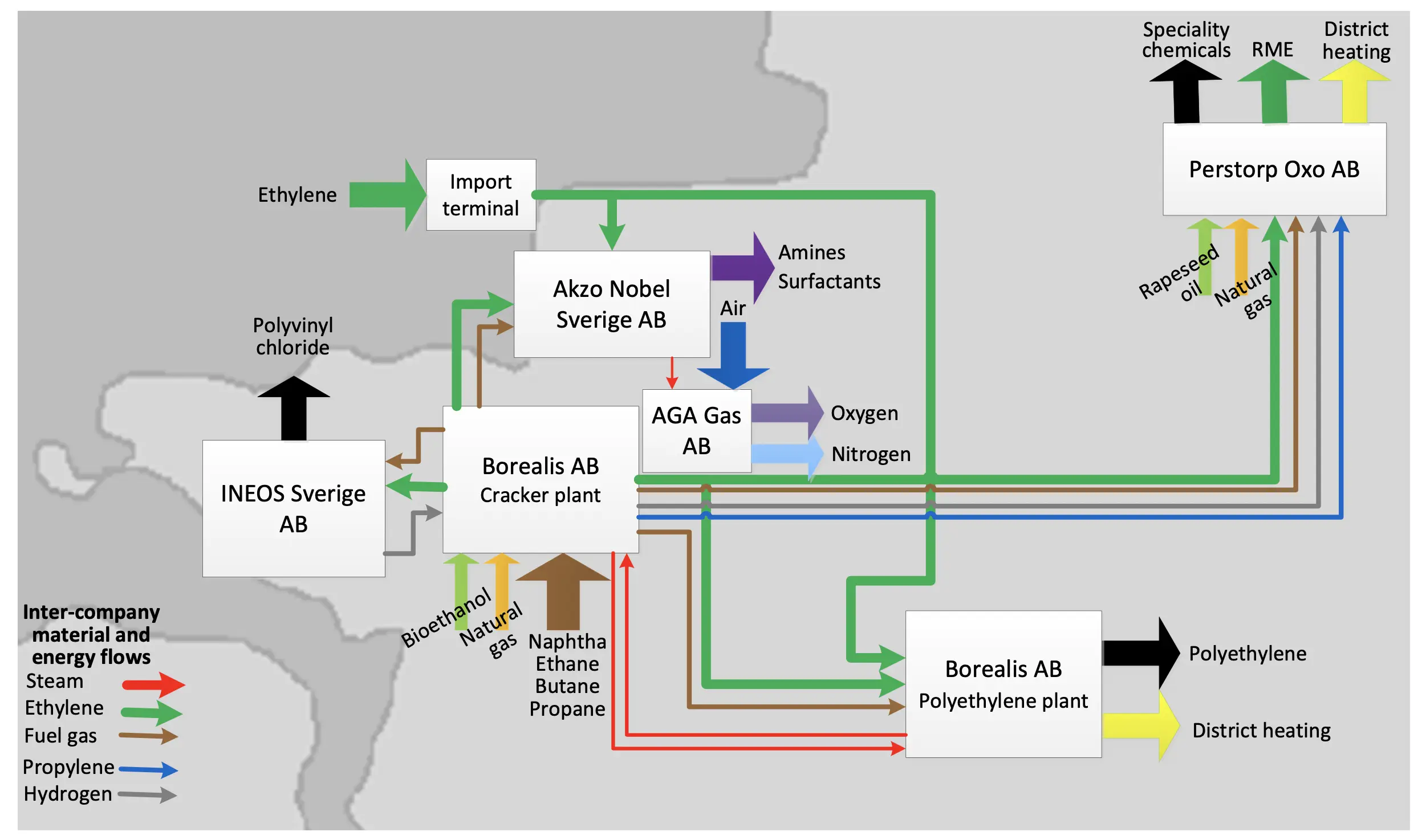Industrial and urban symbiosis in Stenungsund
Forward towards green chemistry with industrial symbiosis.
Advantages
- Energy and resource efficiency
- Innovation capacity
- Forward towards green chemistry with industrial symbiosis.
Overview
On the Swedish west coast lies the municipality of Stenungsund, home to Sweden's largest chemical cluster. Within this cluster, there are numerous ongoing synergies among the actors, including resource, infrastructure, and knowledge synergies. Borealis AB, Sweden's only polyethylene manufacturer, is at the center of this cluster. Borealis supplies the other operations with ethylene and combustion gas, which the other businesses use to produce steam. Many companies in the area have similar energy and heat needs, and there are some exchanges of steam and excess heat in the area, but the potential for expanded energy synergies is significant. The cluster exemplifies a collection of industries that have yet to fully utilize all the energy efficiency opportunities available through joint solutions and more integrated energy systems, but there is great potential for development within the chemical cluster. There is also potential for a shared cogeneration plant that could supply the cluster with process energy. Two of the operations in the chemical cluster send their excess heat to the local district heating network. Borealis and Perstorp Oxo AB have jointly invested in a port where chemicals and oil products can be brought in, with pipelines connected for logistical synergies with the other operations. Besides Borealis and Perstorp, AGA Gas AB, Akzo Nobel Sverige AB, and INEOS Sverige AB are key players in the industrial system.
Highlights
There is important expertise and knowledge synergies within the cluster, exemplified by the Sustainable Chemistry 2030 project. This project aims to transition from fossil raw materials to more renewable ones and to more efficient use of energy and materials within the cluster. The area also has competence synergies that bring together various groups of specialists from different organizations for discussions and knowledge exchanges in their specific specialties.
Drivers and Enablers
A key enabler for the development of this chemical cluster is the regular meetings of the CEOs of the five major companies, approximately once a month, to make decisions regarding ongoing joint projects. The Sustainable Chemistry 2030 project is also a driving factor for continuous contact among the involved actors. Specialists from the operations meet regularly to work on the development and improvement of the chemical cluster. The actors themselves view Sweden's vision of a bio-based chemical industry as a driving force for development. Collaborations, joint projects, the long and shared history, and proximity to each other have built a significant level of trust and confidence among the actors in the area, which lowers the threshold for further collaborations.

